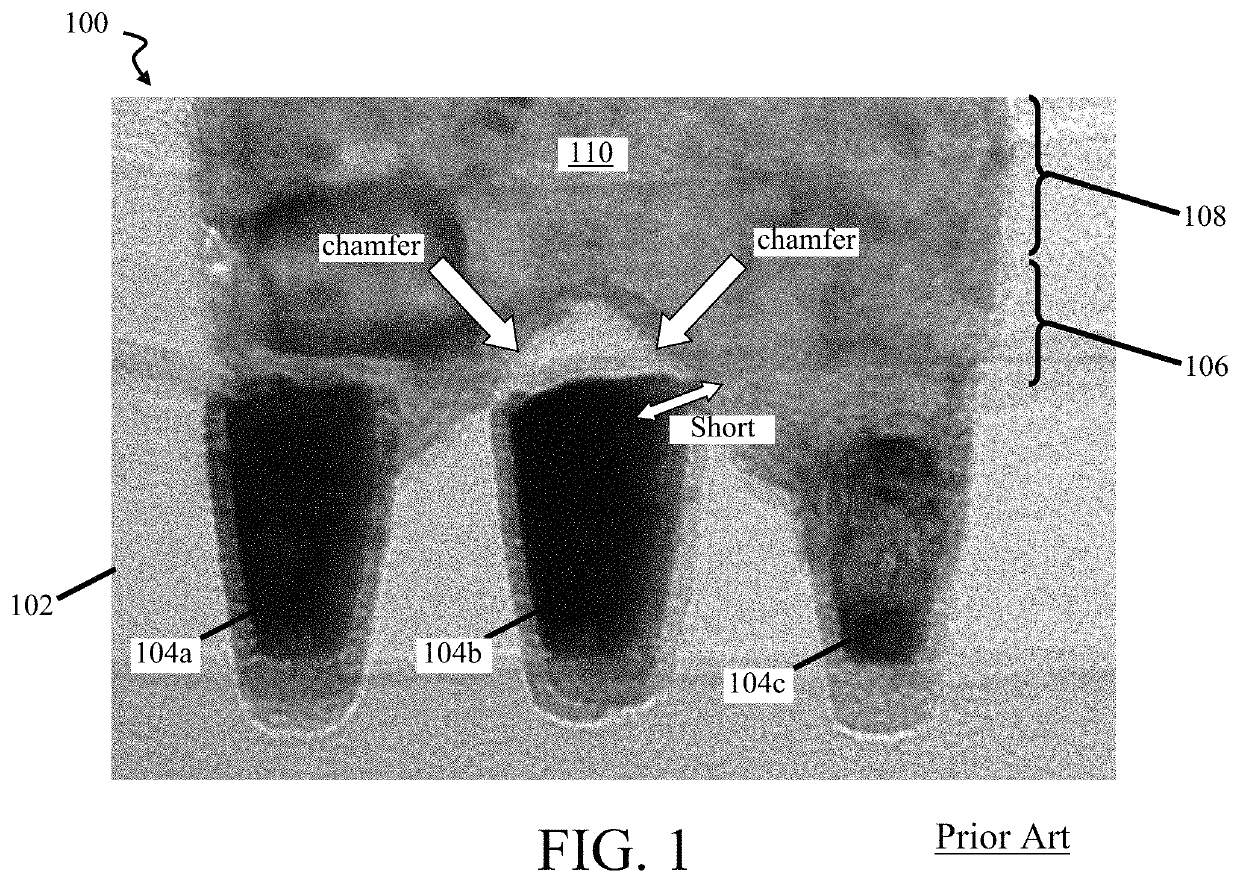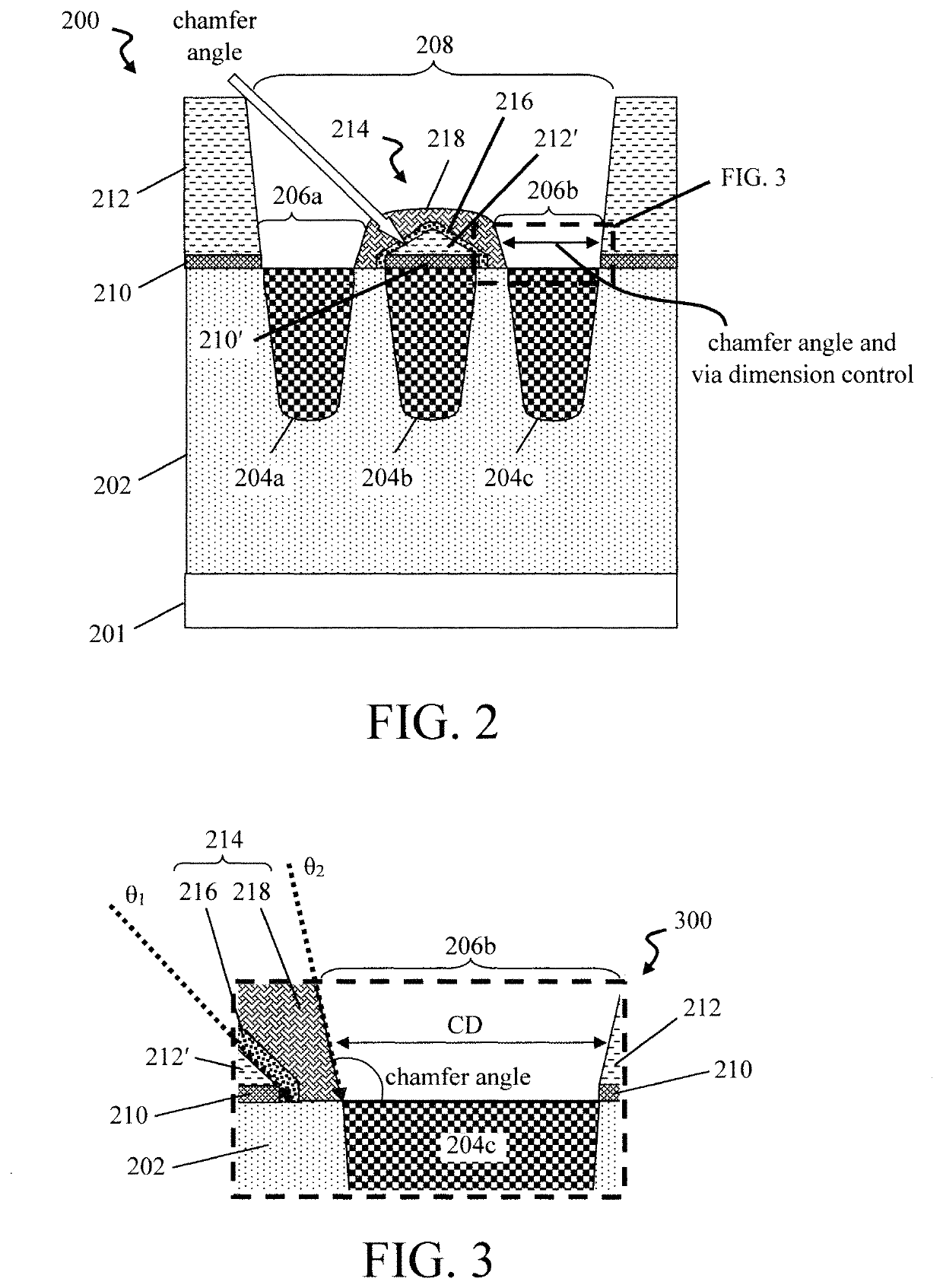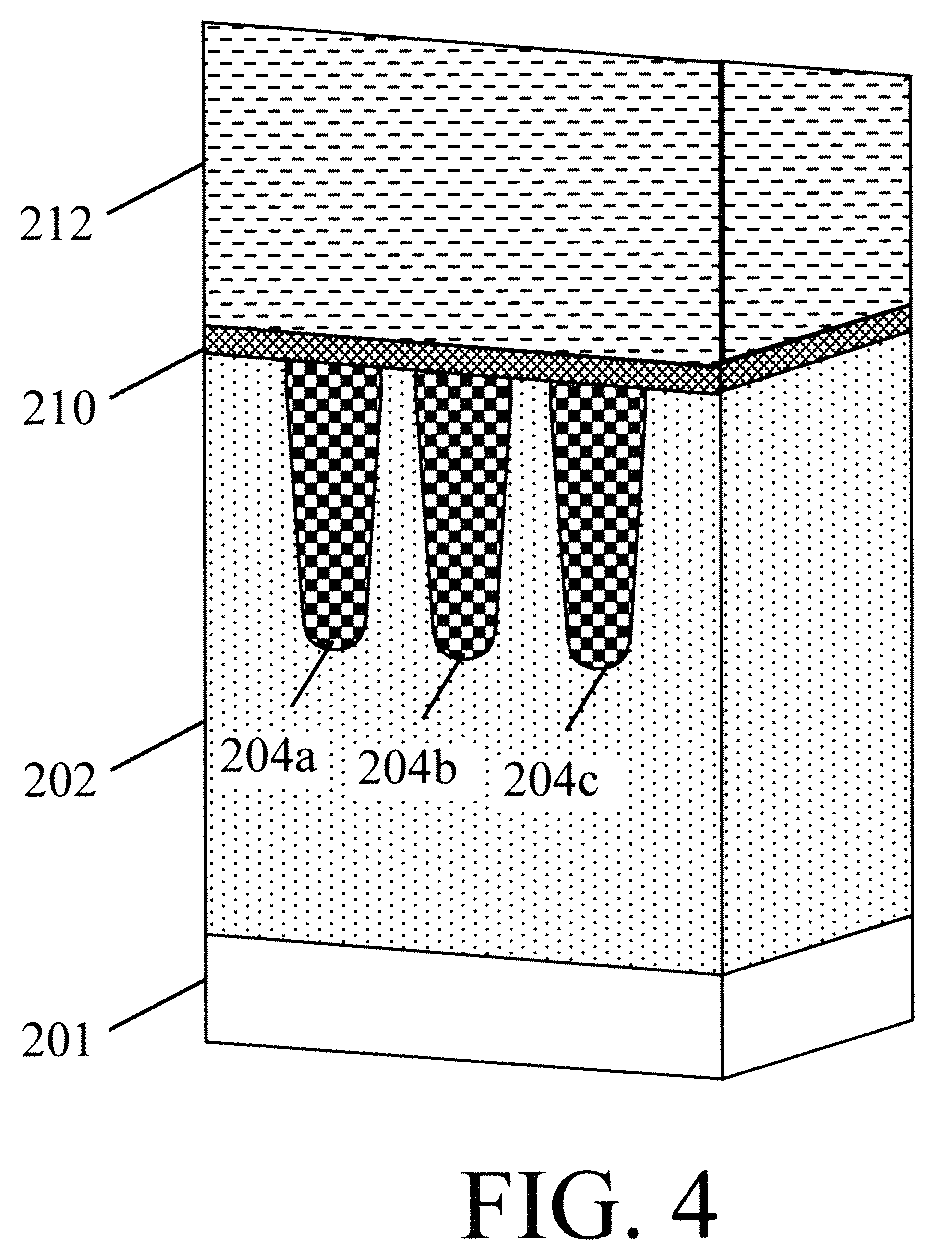Adjustable via dimension and chamfer angle
a via and angle technology, applied in the field of adjustable via dimensions and chamfer angles, can solve the problems of shorting between adjacent interconnects, chamfering at the top corners of vias, and typically not protecting vias
- Summary
- Abstract
- Description
- Claims
- Application Information
AI Technical Summary
Problems solved by technology
Method used
Image
Examples
Embodiment Construction
[0019]As provided above, conventional dual damascene processes can introduce chamfering at the tops of the vias. As shown in FIG. 1, this chamfering can undesirably lead to shorting between the interconnect and adjacent structures. Namely, FIG. 1 is an image 100 of a device structure having multiple metal lines, i.e., metal lines 104a, 104b and 104c, embedded in a dielectric 102. In this example, the goal is to contact the two outer metal lines (i.e., metal lines 104a and 104c), but not the center metal line (i.e., metal line 104b). To do so, a dual damascene process is employed whereby vias 106 and a trench 108 are patterned in the dielectric 102 with the vias 106 over the two outer metal lines (i.e., metal lines 104a and 104c) and the trench 108 over the vias 106.
[0020]However, the problem arises that, if un-protected, the sidewalls of the vias 106 are also etched during the trench 108 etch leading to chamfering of the vias 106. See FIG. 1. This chamfering can undesirably expose t...
PUM
| Property | Measurement | Unit |
|---|---|---|
| thickness | aaaaa | aaaaa |
| dielectric constant | aaaaa | aaaaa |
| dielectric constant | aaaaa | aaaaa |
Abstract
Description
Claims
Application Information
 Login to view more
Login to view more - R&D Engineer
- R&D Manager
- IP Professional
- Industry Leading Data Capabilities
- Powerful AI technology
- Patent DNA Extraction
Browse by: Latest US Patents, China's latest patents, Technical Efficacy Thesaurus, Application Domain, Technology Topic.
© 2024 PatSnap. All rights reserved.Legal|Privacy policy|Modern Slavery Act Transparency Statement|Sitemap



